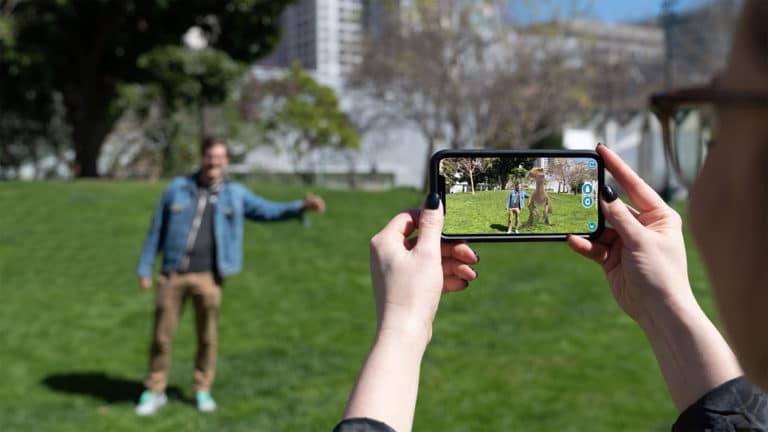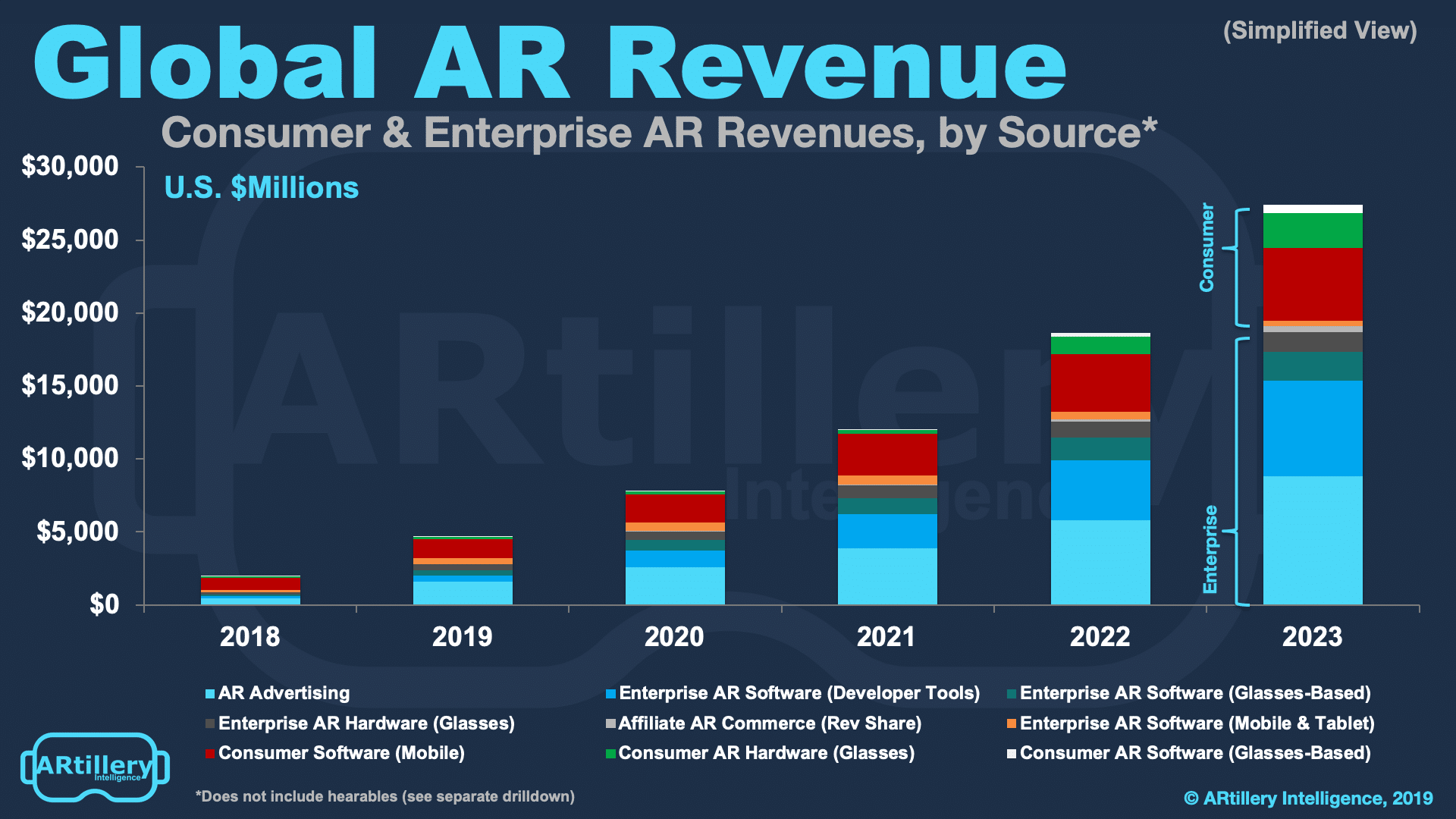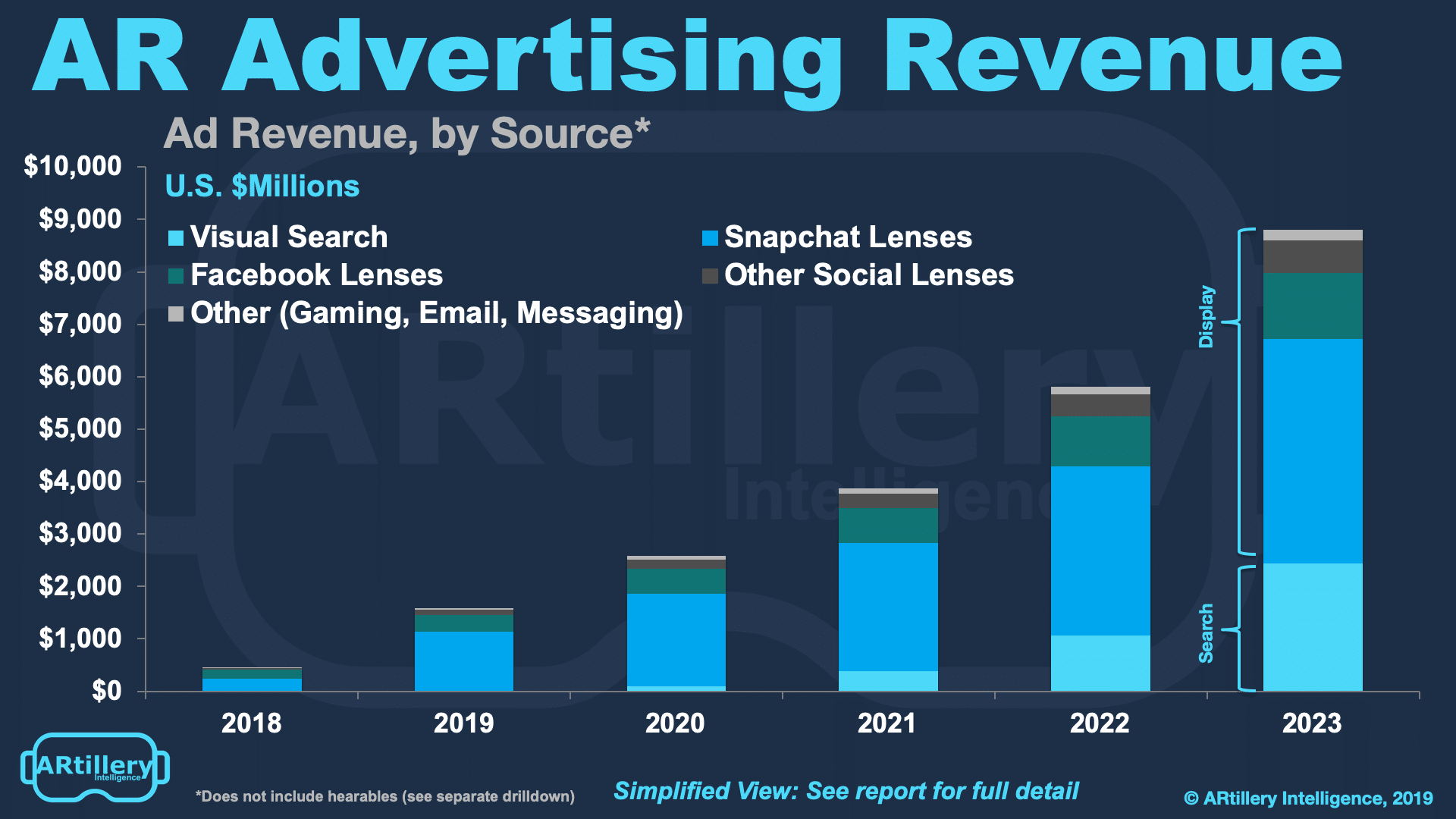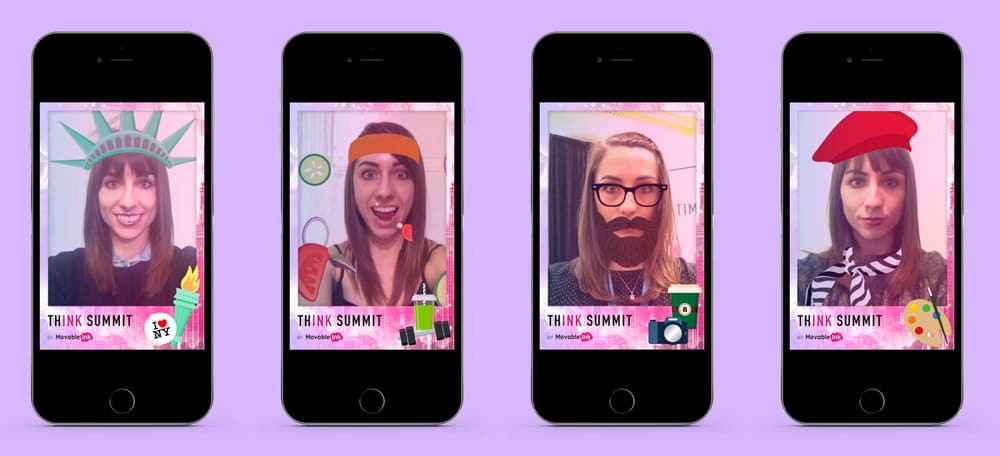
This post is adapted from ARtillery Intelligence’s report, Mobile AR Strategies & Business Models. It includes some of its data and takeaways. More can be previewed here and subscribe for the full report.
In AR’s early stages, a common question continues to be asked: where’s the money? There have been oscillations in excitement and doubt over AR, but the ultimate proof point will be revenue. Though aggregate revenues have disappointed, there are segments that are bearing fruit.
So we’ve determined the three biggest revenue categories for consumer-based mobile AR. We’ve examined them on qualitative and quantitative levels. The former entails product models, leading companies and best practices. The latter entails market sizing and revenue projections.
But before we dive into these models, starting today with advertising, what are they at a high level? We categorize them as follows:
1. Advertising (brands pay)
2. In-app purchases (consumers pay)
3. AR-as-a-service (enterprises pay)

Fun & Games
Picking up where we left off last week, what ad formats are materializing in AR? The most common format is AR lenses, such as branded overlays seen in social contexts like Facebook and Snapchat. This is where the vast majority of AR ad dollars are spent, but the plot will thicken.
In Fact, AR advertising is already starting to branch off into several directions. That includes search (visual search) and messaging (conversational commerce) as we examined last week. But we’re also seeing other forms of AR ad distribution including mobile gaming.
The mobile gaming world has meanwhile evolved greatly in the past decade, and is primed for AR. The go-to business model in mobile gaming is free-to-play games. That can involve in-app-purchases or in-game ads. For the latter, AR is being integrated for more immersive ads.
For example, during certain game milestones, ads are shown as a way for game makers to monetize. Instead of traditional banner ads or video, AR lens ads can take their place. This carries all of AR’s advantages including higher engagement and a more compelling user experience.

“The belief is, and we’re proving this out now through early pilots, that it’s more engaging,” Unity’s Tony Parisi said on The AR Show. “First of all, it’s interactive, not just linear video. Second, it’s relevant and in context. I can get a product display out in front of me and see what that looks like.”
Unity so far is the leader in this emerging area. Though known more for its pervasive game engine, it parlayed that position into an ad network. It did this by offering a revenue-sharing monetization option to game developers, giving it access to a large base of ad inventory.
So an ad network was born, which now reaches 1.7 billion people. And though it preceded AR advertising, it’s naturally become fitting for AR. We see this as a growth area for AR advertising, based on Unity’s reach and the increasing comfort levels with AR among mobile gamers.
“We realized that with the magic of ARkit and ARCore, we could deliver interactive AR experiences into that same stream,” said Parisi. “So instead of just a linear video ad, you can have an interactive experience and then if you turn the camera on, you get an AR version of that.”

AR is being applied in all kinds of places as an engagement driver for brand advertising and commerce, per the above examples. So it was only a matter of time before it reached one of the oldest and most effective digital marketing mediums: email.
So what does the intersection of email and AR look like? Movable Ink is one example. The company lets marketers create emails that activate AR experiences. So clicking on an AR call-to-action activates the front-facing camera and launches AR interactions for the sender’s product.
This can include style items, travel, and food. In these verticals, the company is seeing open rates as high as 81 percent across the board. To put that into perspective, average open rates in email marketing and newsletters are about 21 percent according to figures from MailChimp.
In an individual email marketing campaign for Virgin Holidays, Movable Ink achieved a 40 percent boost in email open rates. Beyond open rates, post-open engagement was also favorable at 75 percent more than average campaigns. These are significant performance boosts.

Email marketing KPIs usually measure clicks, but an equally telling metric is time, where Movable Ink saw half of email opens lead to 1-minute+ AR engagement. 50 percent of opens resulted in the recipient taking a selfie with the AR animation and 45 percent of those shared on social media.
Of course, this means the opportunity is limited to recipients opening these emails on their smartphones, as opposed to desktop, but mobile email engagement continues to grow. Moreover, engagement metrics like open rates are higher on mobile, averaging 55 percent.
It’s worth noting in the spirit of best practices that these metrics are partly due to AR’s inherent engagement, but also execution. Movable Ink’s tools involve drag & drop ways to develop AR animations. They’re rudimentary (non-SLAM) interactions… but sometimes “simple wins.”
We’ll be back next week to continue the discussion around developing AR business models, and will dive into in-app-purchaess next. Meanwhile, see more about this report or subscribe to access it here. Revenue models will be a quickly moving target as AR finds its footing.
For deeper XR data and intelligence, join ARtillery PRO and subscribe to the free AR Insider Weekly newsletter.
Disclosure: AR Insider has no financial stake in the companies mentioned in this post, nor received payment for its production. Disclosure and ethics policy can be seen here.
Header Image Credit: Unity
